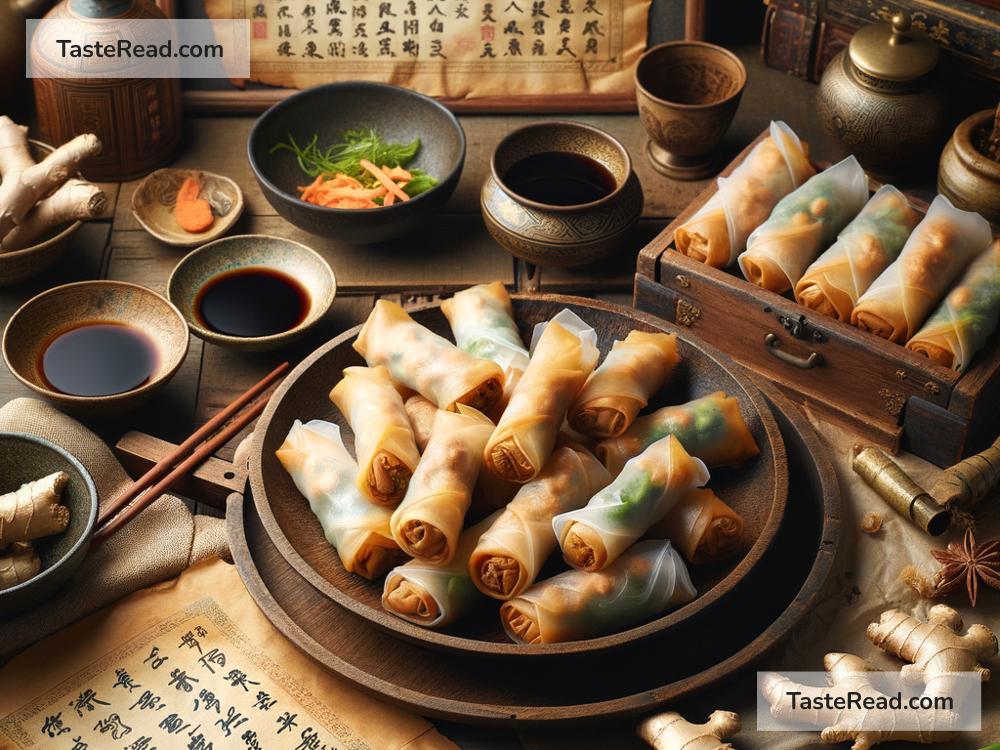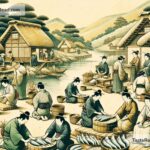The Story Behind the Origins of Spring Rolls: An Ancient Delight
We all love tasting spring rolls, those crispy, golden treats filled with amazing flavors. Whether they’re stuffed with veggies, meat, or something sweet, spring rolls are a favorite snack across the world. But have you ever wondered where these delightful creations first came from? Let’s take a journey back in time to uncover the ancient tales and origins of spring rolls.
What Are Spring Rolls?
Spring rolls are thin pastries rolled around various fillings. They are often deep-fried, making their outer shell crispy, but some versions are steamed or served fresh with soft, rice-paper wrapping. Originating from Asia, this dish has evolved into many varieties depending on the country and culture. But how did spring rolls first come to be?
A Connection to Spring Festivals
As the name suggests, spring rolls are closely tied to the season of spring. Many historians believe that they were originally prepared as a part of spring celebrations in ancient China. These celebrations welcomed longer days, warmer weather, and the blooming of flowers—marking the end of harsh winter months.
In ancient China, it was common for farmers and families to prepare special foods to celebrate the arrival of spring and give thanks for the upcoming harvest season. Food was often shared among people, symbolizing unity, prosperity, and the joy of renewal. It is believed that spring rolls were first created for these festivals, combining fresh seasonal vegetables that marked the start of agricultural abundance.
The Song Dynasty’s Culinary Legacy
Historians trace the origins of spring rolls back to the Song Dynasty (960–1279 CE) in China. During this period, cultural arts and cuisine flourished. People loved creating dishes that were not only tasty but also symbolic. Spring rolls were originally called “spring cakes,” as they were thin pancakes filled with fresh vegetables or leftovers from the pantry that families had gathered at the end of winter.
These pancakes were rolled into a cylindrical shape, resembling scrolls or bamboo shoots. Some ancient texts suggest that spring rolls were inspired by the idea of renewal and growth—symbolizing rebirth after winter’s struggles. Over time, the humble spring cake evolved into the crispy, golden rolls we know today, with fried variations becoming popular in later dynasties.
The Art of Wrapping Tradition
Spring rolls also reflect the long-standing art of wrapping food in traditional Chinese cooking. Wrapping food was seen as a way to preserve flavors, create easy-to-carry snacks, and ensure ingredients blended perfectly together. Ancient tales suggest that cooks passed down the skill of making spring roll wrappers—thin, delicately layered sheets—to young chefs.
These wrappers were originally made with wheat flour and water. Kneaded by hand, stretched out thin, and cooked lightly on a flat pan, they had to be feather-light yet strong enough to hold the filling. This skill was considered an important part of Chinese culinary heritage.
From Humble Origins to Global Fame
Over centuries, spring rolls began to evolve and spread across regions and cultures. Different provinces in China started adding their own twist to the dish. Some versions used meat, seafood, or mushrooms as fillings, while others kept things vegetarian with cabbage, carrots, and bean sprouts.
With trade along the Silk Road and immigration, spring rolls found their way to other Asian countries such as Vietnam, Thailand, and the Philippines. Vietnam, for example, is famous for its fresh version called “gỏi cuốn,” made with soft, translucent rice paper and filled with shrimp, herbs, and vermicelli noodles.
Eventually, spring rolls crossed borders to Europe and America, where they became a favorite at family gatherings and restaurants. Their universal appeal lies in their versatility—they can be adapted to suit any flavor preference, from spicy fillings to sweet chunks of fruit.
Have Spring Rolls Changed Over Time?
The core idea of spring rolls—wrapping delicious fillings into bite-sized snacks—has remained consistent for centuries. However, the dish has gone through some changes as countries added their own creative touches.
In modern times, spring rolls are enjoyed in countless variations. You’ll find fried rolls dipped in tangy sauces, fresh rolls served with peanut dressing, or even dessert rolls filled with chocolate and bananas! The wrappers, too, have changed depending on local ingredients, showcasing the adaptability of this ancient dish.
A Dish That Brings People Together
Spring rolls are more than just food; they carry the legacy of history, family traditions, and cultural sharing. Their long-standing connection to spring symbolizes hope, new beginnings, and the beauty of simplicity.
Next time you bite into one, take a moment to consider how this seemingly small snack speaks of a rich past. From ancient farmers celebrating spring to chefs experimenting with global flavors, the story of spring rolls reminds us that food can bridge time and bring people closer.
So, whether you’re making them at home or ordering them at a restaurant, spring rolls tell a tale that began centuries ago—a timeless treat that never fails to bring joy.
Enjoy your spring rolls, and don’t forget their ancient origin story the next time you crunch into one!


